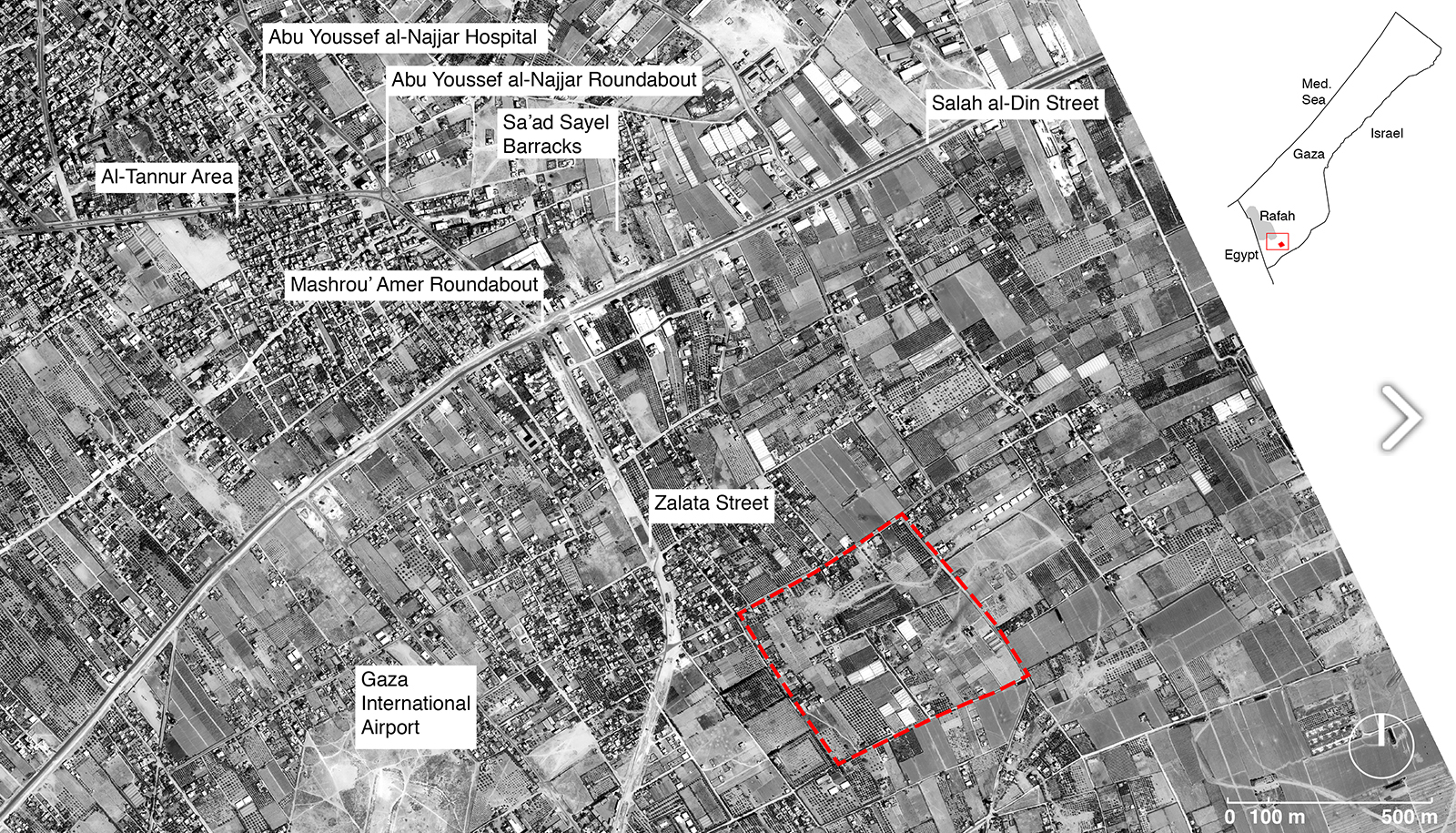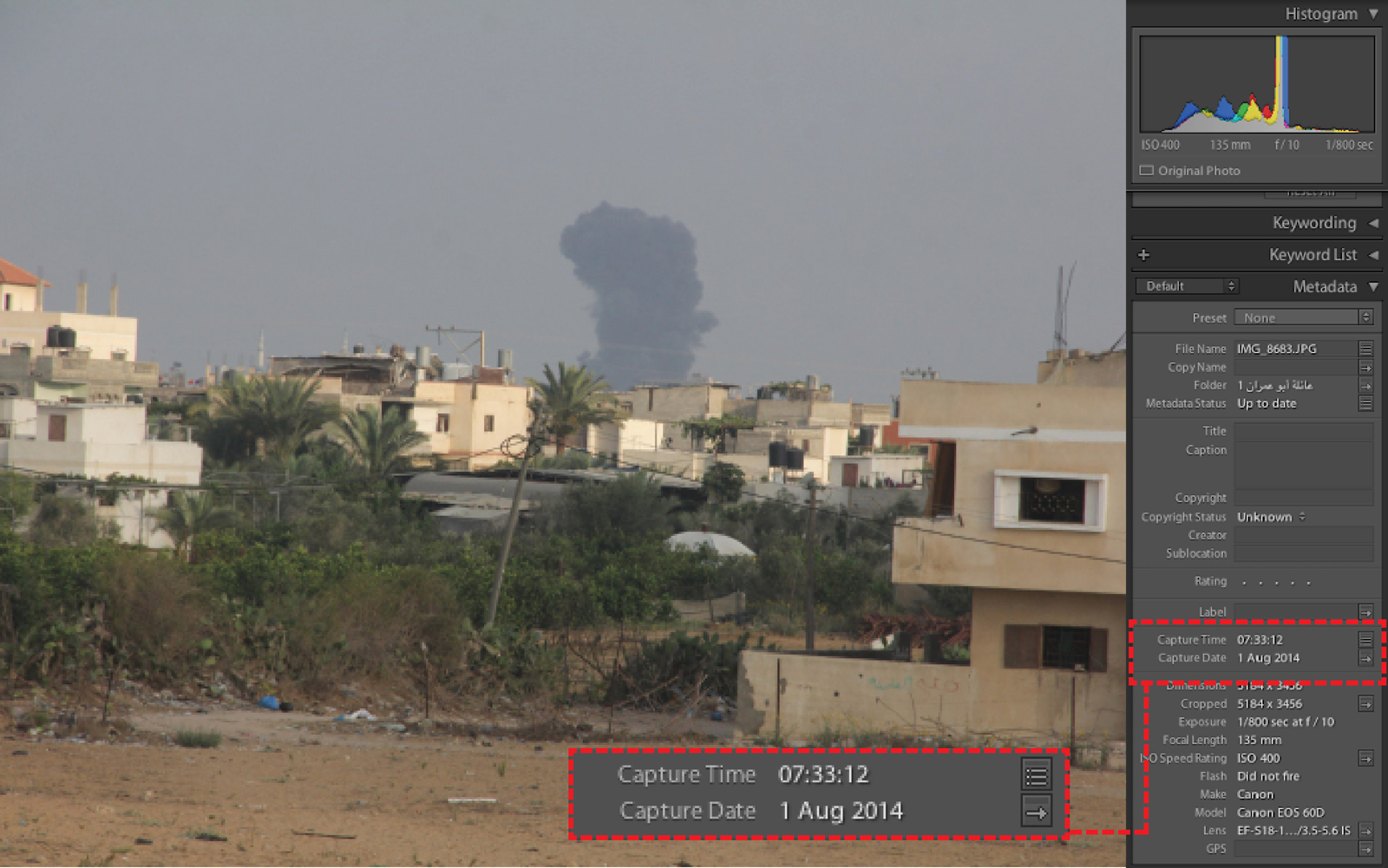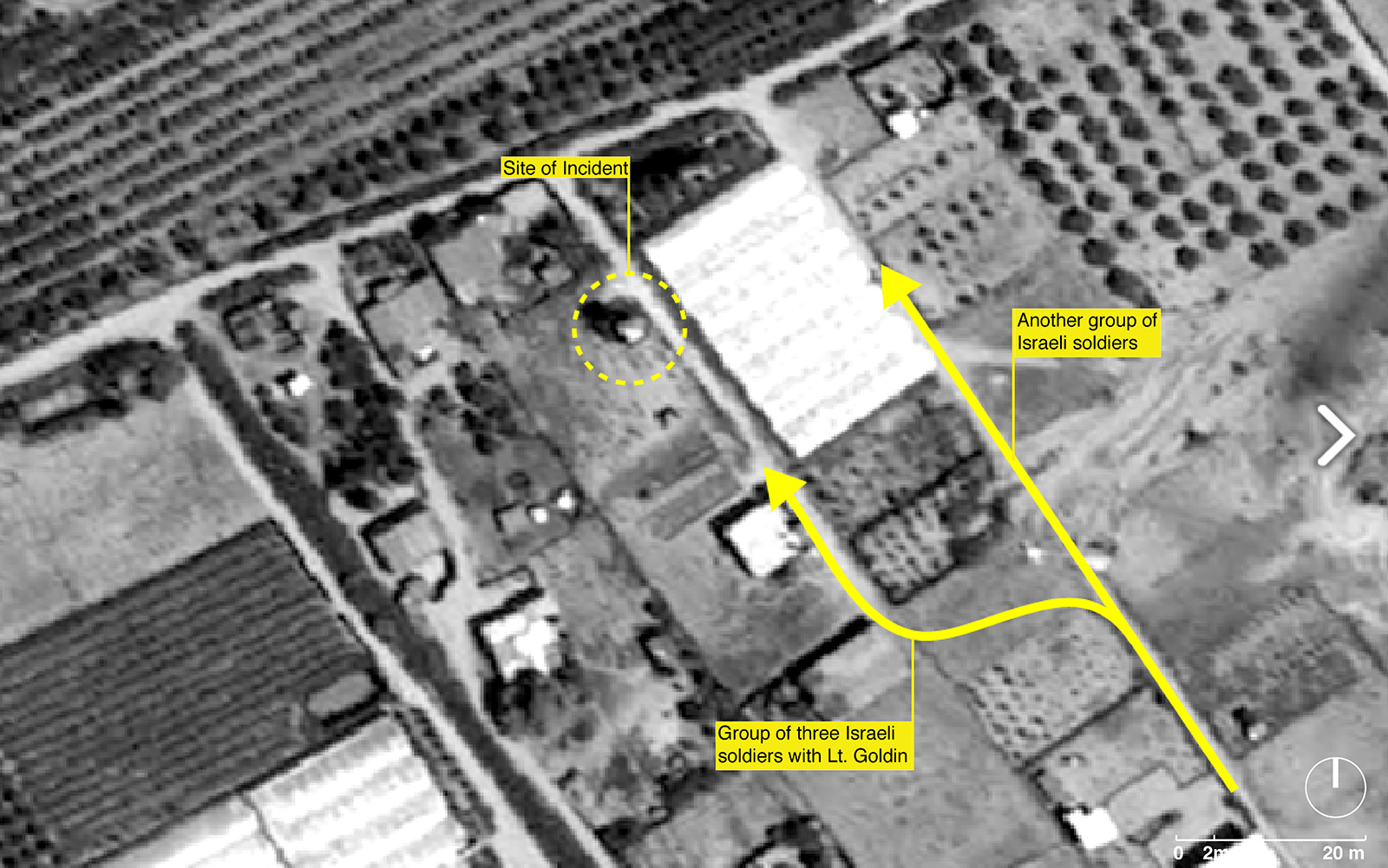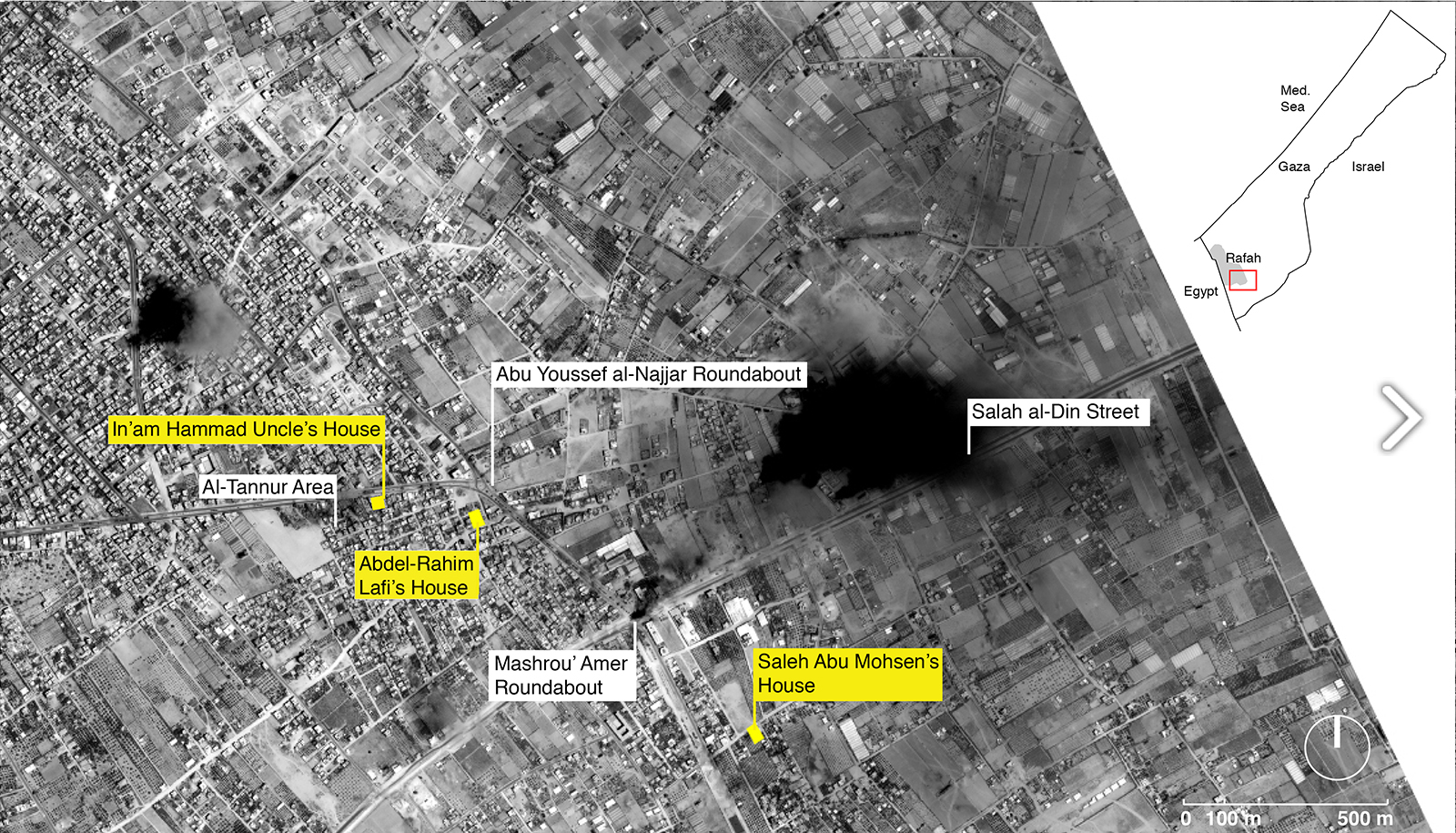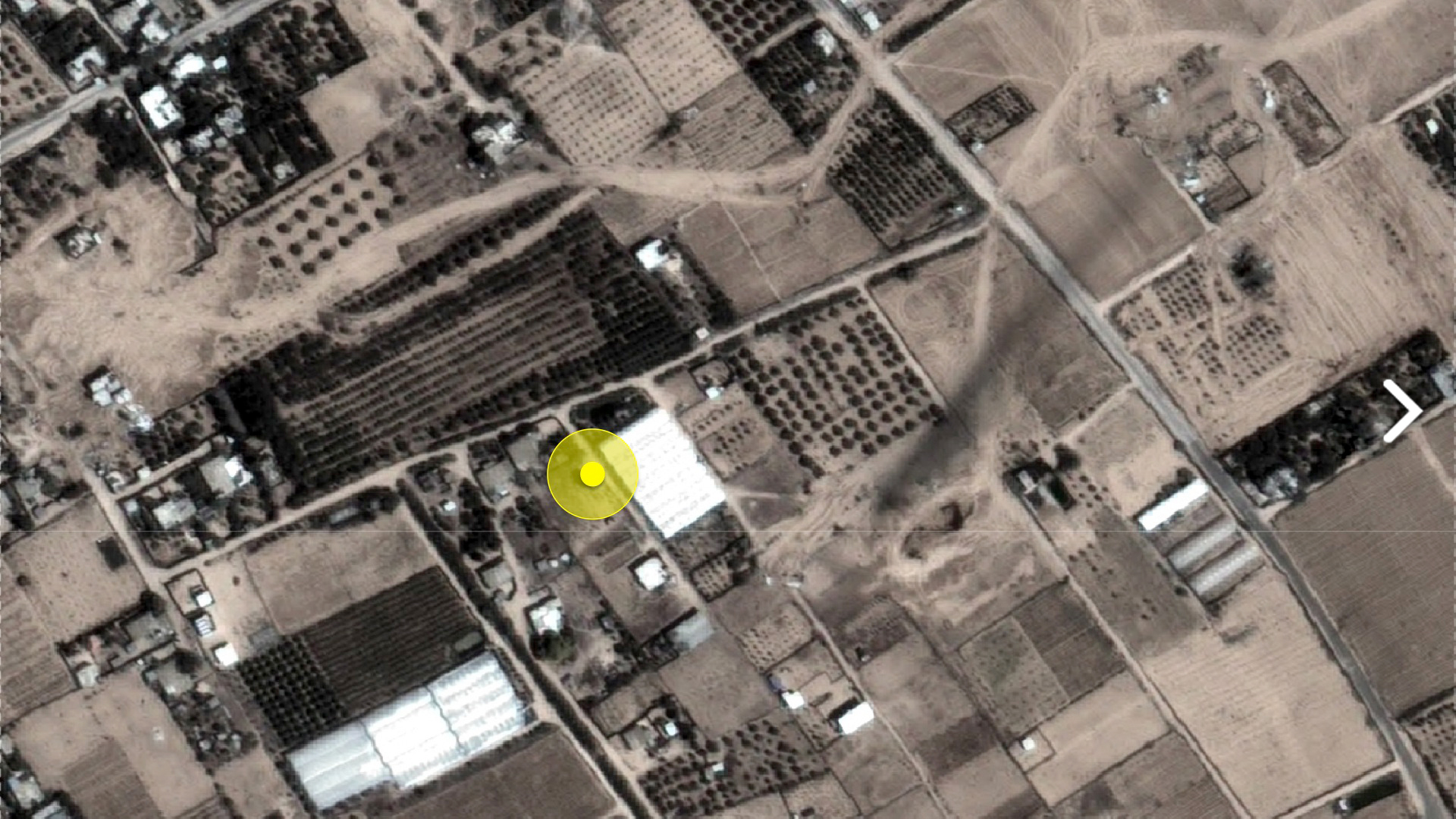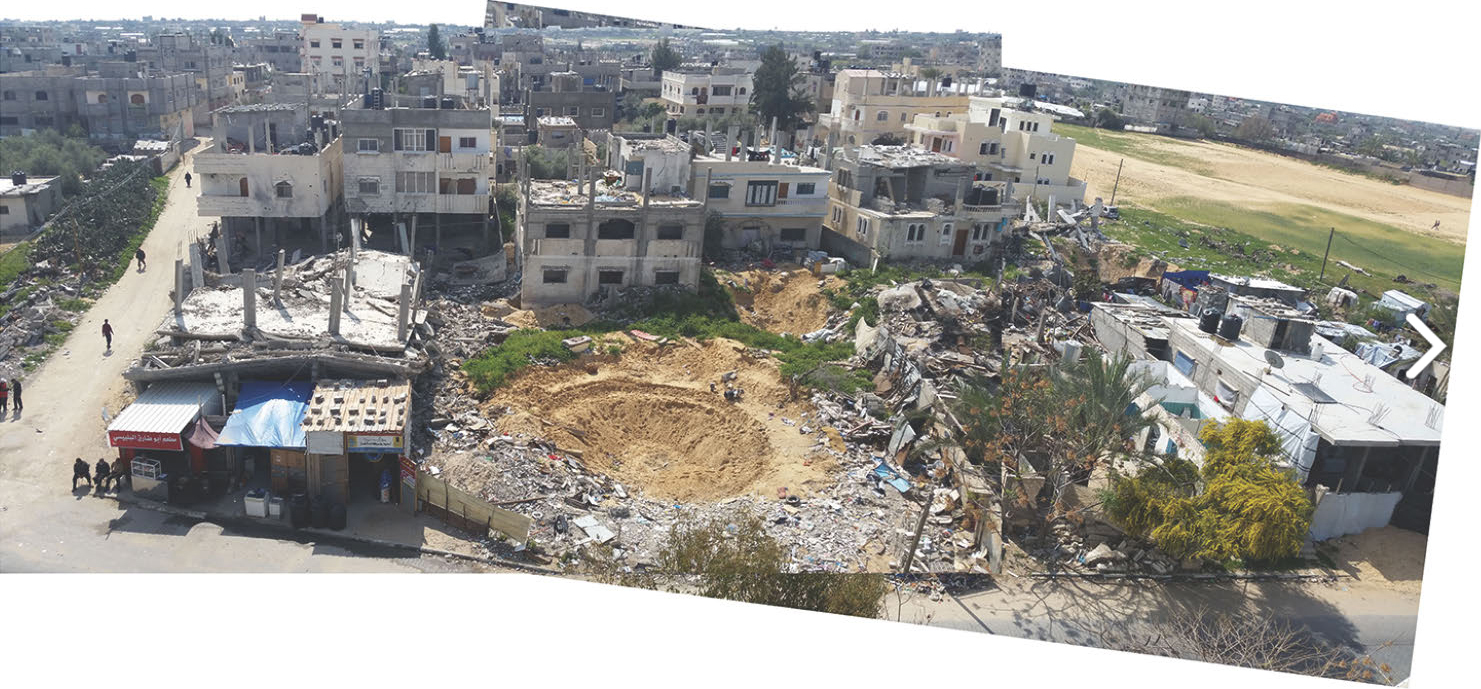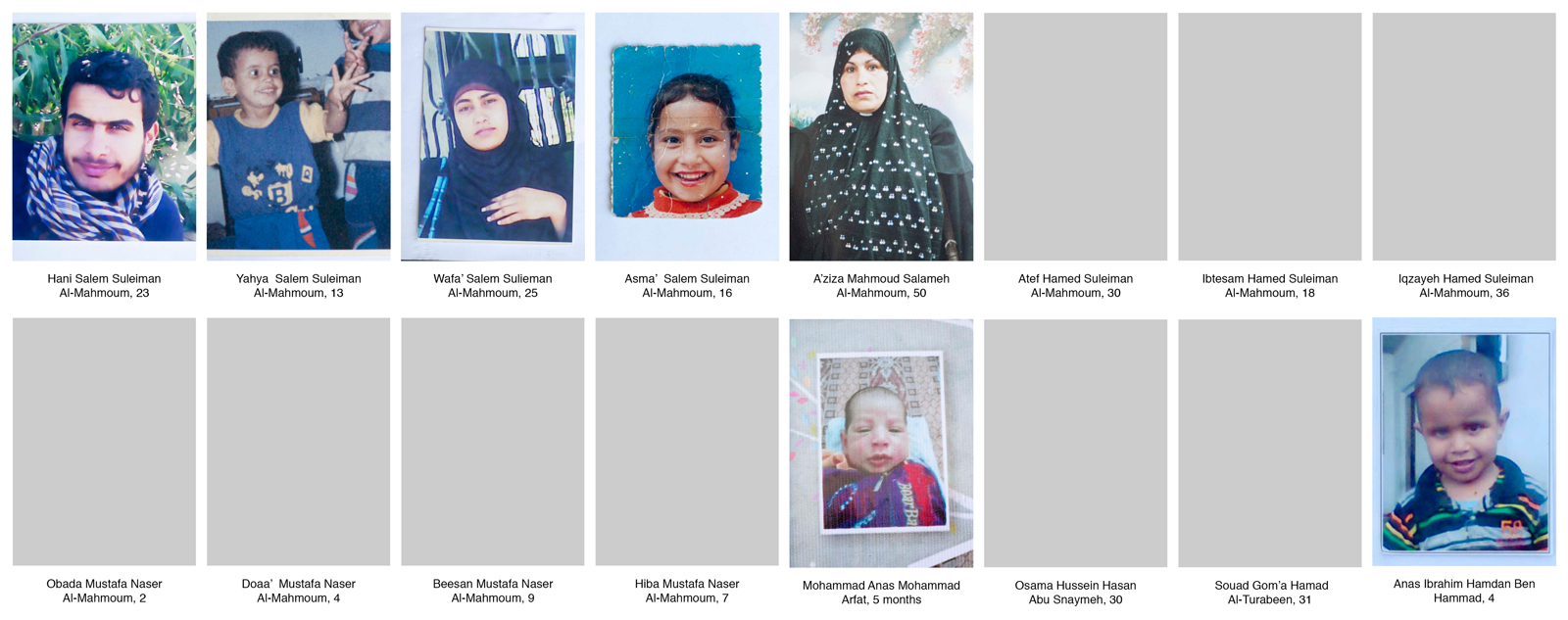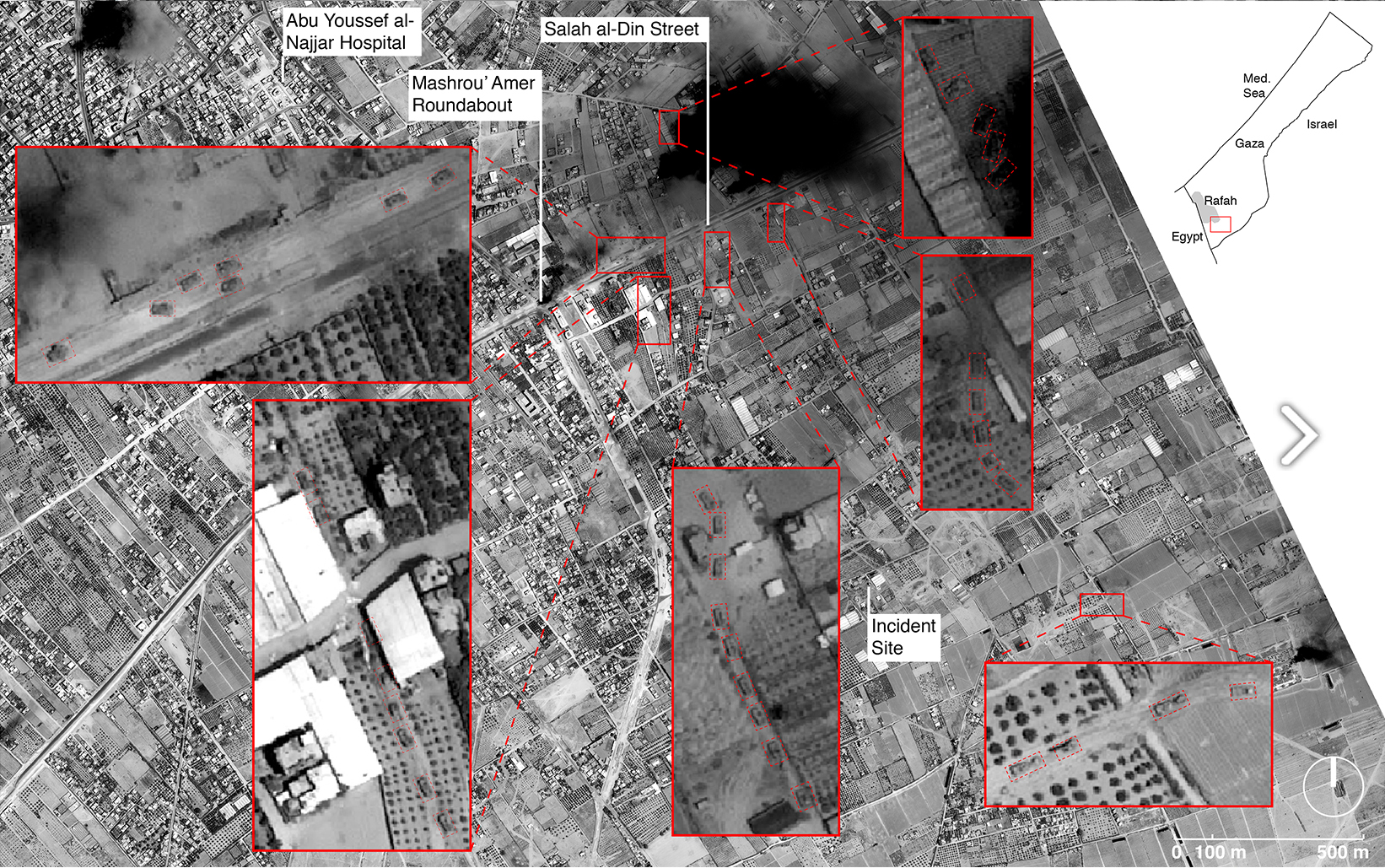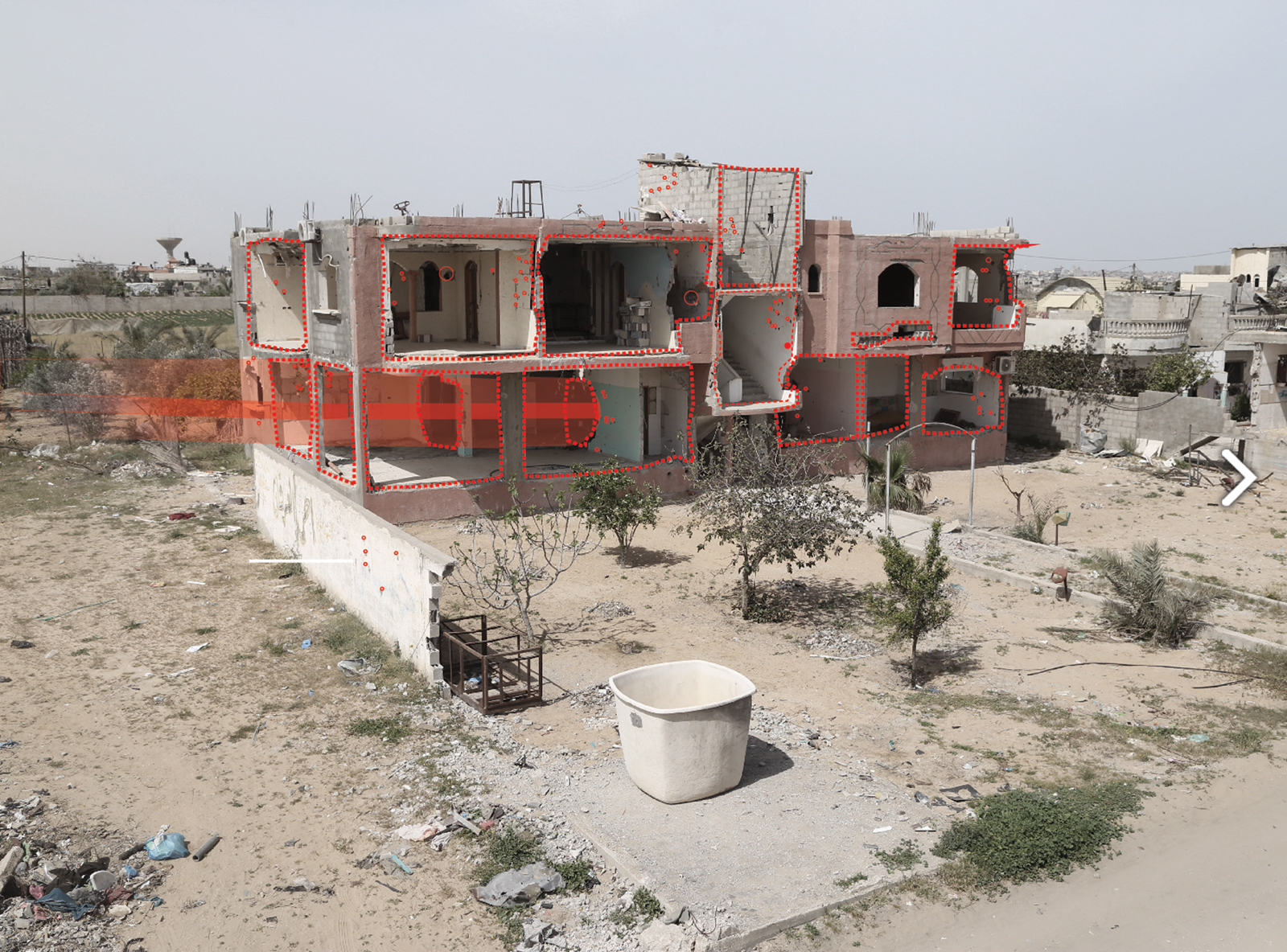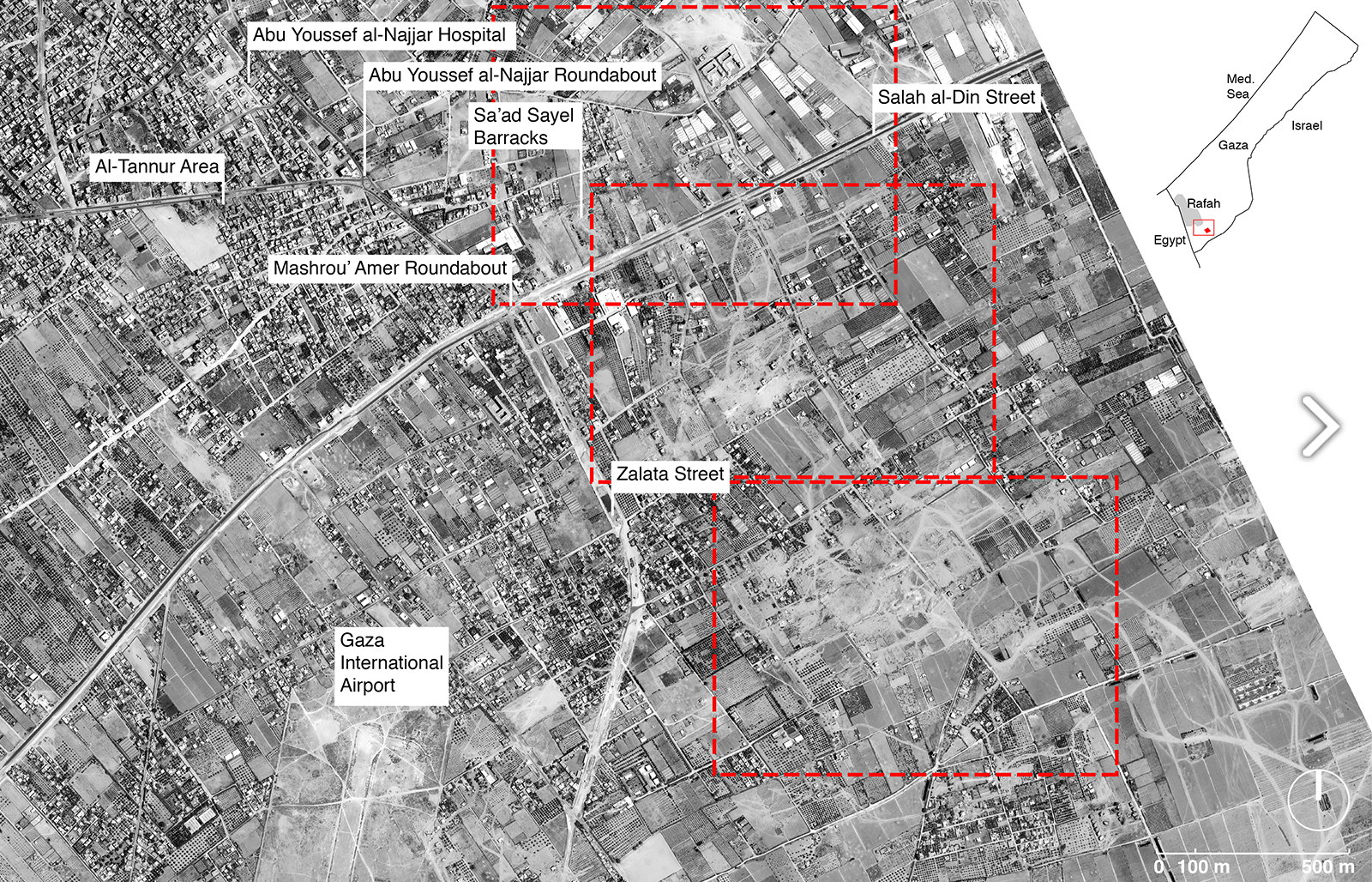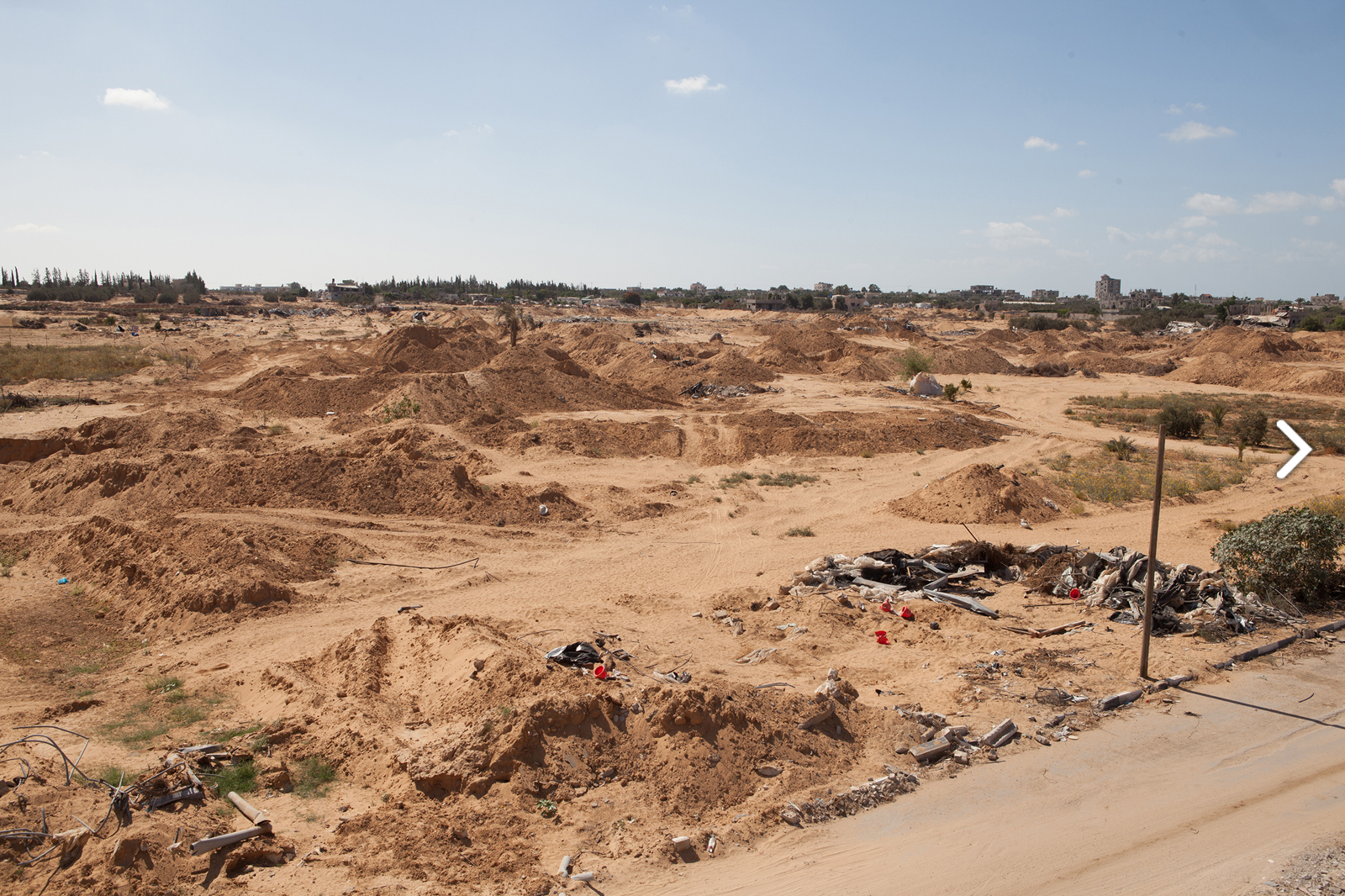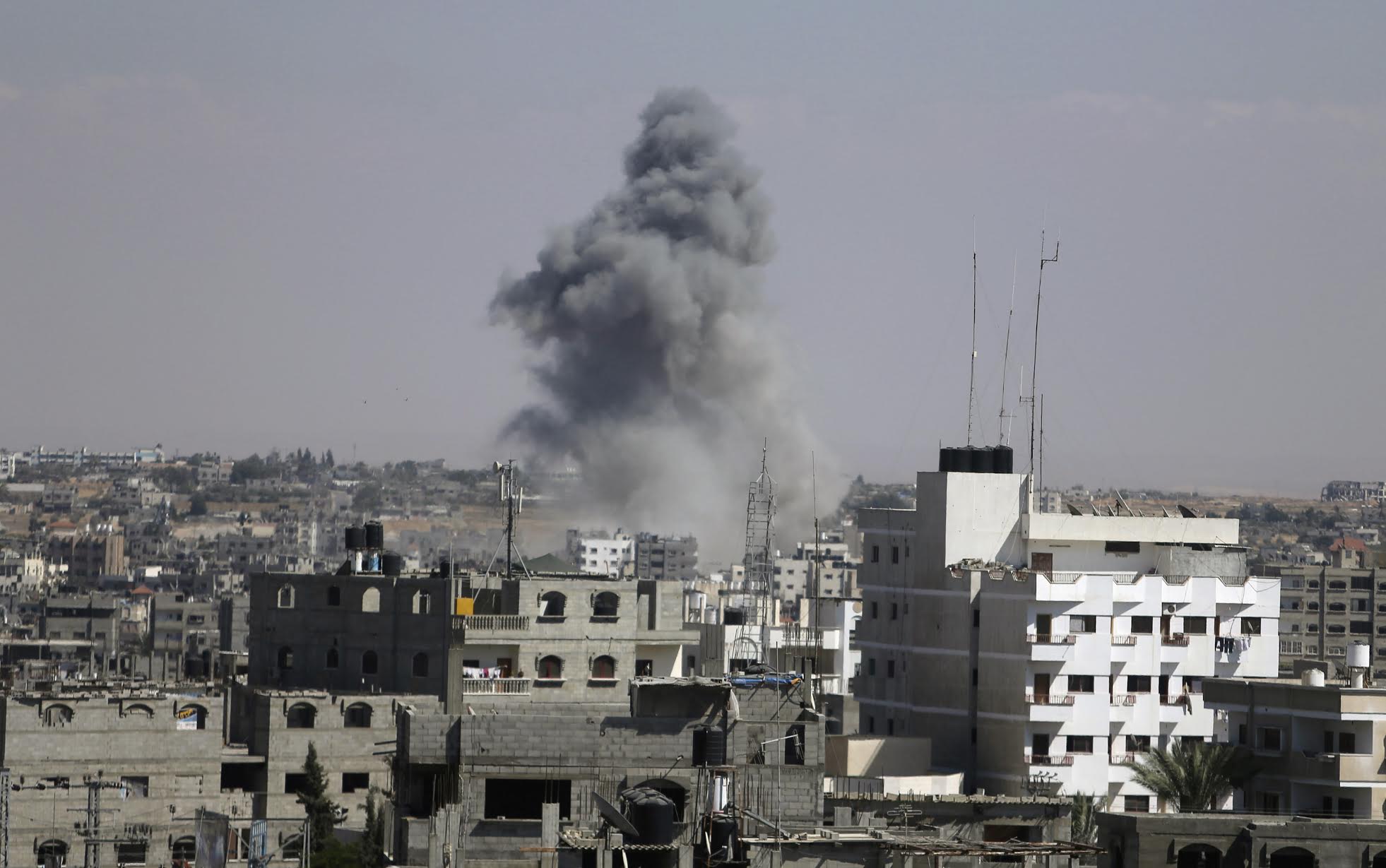'Black Friday'
On 1 August 2014 Israel and Hamas agreed to a 72-hour humanitarian ceasefire that would take effect at 8am that day. Four weeks after Israel launched a military offensive on Gaza, thousands of Palestinians who had sought refuge in makeshift shelters or with relatives prepared to return to their homes during the anticipated break in hostilities.
In Rafah, the southernmost city in the Gaza Strip, a group of Israeli soldiers patrolling an agricultural area west of the border encountered a group of Hamas fighters posted there. A fire fight ensued, resulting in the death of two Israeli soldiers and one Palestinian fighter. The Hamas unit captured an Israeli officer, Lieutenant Hadar Goldin, and took him into a tunnel. What followed became one of the deadliest Israeli attacks during the war; an intensive use of firepower, which lasted four days and killed scores of civilians (reports range from at least 135 to over 200), injured many more and destroyed or damaged hundreds of homes and other civilian structures, mostly on 1 August.
Bombs dropped in Israeli air strikes fall in eastern Rafah on 1 August 2014 at 12.26pm. © Private.In this report, Amnesty International and Forensic Architecture, a research team based at Goldsmiths, University of London, provide a detailed reconstruction of the events in Rafah from 1 August until 4 August 2014, when Israeli ground forces retreated to Gaza’s borders, although the conflict lasted for three more weeks. The report exposes the Israeli army’s response to the capture of Lieutenant Hadar Goldin and its implementation of the Hannibal Directive – a controversial command designed to deal with captures of soldiers by unleashing massive fire on persons, vehicles and buildings in the vicinity of the attack, despite the risk to civilians and the captured soldier.
The report recounts events by connecting various forms of information including: testimonies from victims and witnesses including medics, journalists, and human rights defenders in Rafah; reports by human rights and other organizations; news and media feeds; public statements and other information from Israeli and Palestinian official sources; and videos and photographs collected on the ground and from the media. The events are presented in the time and space in which they took place.
The main narrative of the report includes links to detailed case studies that describe individual incidents in which civilians were killed or injured and include testimonies collected by Amnesty International fieldworkers during the conflict or shortly afterwards, in August or September 2014 (one case study, that of the Abu Suleiman family, includes extracts from testimonies provided to the Al Mezan Center for Human Rights during the conflict). The case studies also include analysis of how the actions of the Israeli military violated international humanitarian law (the laws of war). The report presents relevant provisions of international law and analyses the adequacy or otherwise of the Israeli investigations carried out to date into the events of 1-4 August 2014. In addition, the report includes a detailed methodology section and a background section that sets out the context of the events in Rafah, namely the overall conflict of July-August 2014 and patterns of violations on both sides, as well as a brief history of the Hannibal Directive. Finally, on the basis of the information and analysis presented in the report as a whole, the report sets out conclusions on the extent to which the attacks of 1-4 August 2014 violated international humanitarian law and might amount to war crimes and crimes against humanity, as well as proposing recommendations for how justice can be achieved for victims and how such violations can be avoided in the future.
From Ceasefire to Carnage
On the night between 31 July and 1 August 2014 Israel and Hamas agreed to a 72-hour humanitarian ceasefire, negotiated by the UN and the USA. The official announcement came at 1.18am on 1 August and read: “This humanitarian ceasefire will commence at 8am local time on Friday, August 1, 2014. It will last for a period of 72 hours unless extended. During this time, the forces on the ground will remain in place.” The ceasefire was supposed to lead to negotiations that would end the conflict. Following the announcement the Israeli officials stated that even during a ceasefire they would continue to search for and demolish tunnels within its lines. Hamas agreed to cease its cross-border rocket fire but said it did not agree to the Israeli army continuing to take actions against tunnels.
Following the announcement of the ceasefire, Colonel Ofer Winter, the commander of the Israeli army’s Givati Brigade (an infantry brigade in charge of the military operation in the area), ordered his troops to find and destroy a tunnel – at the time, the last known tunnel that had not been discovered and destroyed by the Israeli army – south-east of Rafah, about 2km north-west of the border with Israel. It was in an agricultural area with scattered homes, small plantations, fields and greenhouses. The military had previously occupied and searched the area but eventually retreated without finding the tunnel. On the night of 31 July - 1 August the area was beyond the Israeli army lines established within Gaza.
A Pléiades satellite image from 30 July 2014 showing south-eastern Rafah, with a red line marking the area where the capture of Lieutenant Hadar Goldin took place. © CNES 2014, Distribution AIRBUS DS, all rights reserved.According to the report of the Givati Brigade inquiry, commissioned by the Israel army to draw lessons from the military operation in Rafah, parts of which were made public, Colonel Winter ordered his forces to surround and isolate the possible tunnel area until 8am when the ceasefire was to come into effect. According to Colonel Winter, the intention was to create a line further into the Gaza Strip within which the Israeli army could continue searching for tunnels. Colonel Winter described this military manoeuvre to the Givati Brigade inquiry as “confusing” since it led to a situation whereby a tunnel harbouring Palestinian fighters existed within the area surrounded by the Israeli army during the ceasefire.
In a testimony given to Breaking the Silence, a junior infantry field officer who took part in the incursion describes his experience:
According to this officer his unit destroyed about 12 structures, mostly one-story houses and agricultural structures.At 7.30am the ‘Izz al-Din al-Qassam Brigades (al-Qassam Brigades), Hamas’ military wing, tweeted about “battles in east Rafah”. At 7.34am they tweeted that “at 7am a group [of Hamas fighters] clashed with [Israeli] forces east of Rafah and caused many injuries and death to them [Israeli soldiers].” Hamas later claimed that the capturing of Lieutenant Goldin took place at this time. Medical staff in the Abu Youssef al-Najjar hospital said casualties started arriving at the hospital around 8am.
The blast of an Israeli air strike, seen from Khirbet al-‘Adas, eastern Rafah, on 1 August 2014 at 7.33am. © Private.At 7.33am Israeli fighter jets bombed the house of Suleiman Zayed Suleiman Abu Omran in Khirbet al-‘Adas, less than 200m north-east of the Abu Youssef al-Najjar roundabout, killing six civilians including one child. Suleiman Zayed Suleiman Abu Omran told Amnesty International:
According to Amnesty International’s research, there was no military target in the house.
Meanwhile, displaced Palestinian families started returning to their homes, believing the announcement of a ceasefire on the morning of 1 August signified a lull in fighting. This was in line with the ceasefire terms, which stated: “During this period, civilians in Gaza will receive urgently needed humanitarian relief, and the opportunity to carry out vital functions, including burying the dead, taking care of the injured and restocking food supplies.”
A Palestinian family returning to their home in eastern Rafah during the ceasefire, with the ruins of the house of the Abu Omran family in the background, on 1 August 2014 around 8am. © Private.Hannibal Unleashed
Around that time a group of six Israeli soldiers from the reconnaissance unit of the Givati Brigade was searching for a tunnel in an area of plantations and greenhouses. An officer from the Givati Brigade explained that the area was considered “dirty” (an area that has not been searched nor cleared of enemy forces). Colonel Winter told the Givati Brigade inquiry the area was “unoccupied and unsecured”. The al-Qassam Brigades describe the situation as follows:
According to the Israeli army, at about 9am Major Banya Sarel, the reconnaissance force commander, radioed that he was about to arrest a “suspicious person” he had spotted some 150m away on top of a narrow two-story cinder block structure whose top floor had openings in all directions. The soldiers divided into two groups of three. Major Sarel, his radioman Staff Sergeant Lial Gidoni, and Lieutenant Goldin, another reconnaissance officer, approached the structure, with the other group of three soldiers outflanking the building from around a large greenhouse. It was a tactical error to have approached the structure with such a small force, Colonel Winter later admitted to the Givati Brigade inquiry. While it was routine, at least in Operation Protective Edge, for soldiers to fire missiles or tank shells at buildings before approaching them, was ruled out because of the ceasefire. The outflanking group members recall hearing Major Sarel calling for help, immediately followed by a blast and two short sequences of fire. Major Sarel, Staff Sergeant Lial Gidoni and Lieutenant Goldin then stopped responding on the radio.
The paths the two groups of Israeli soldiers took when approaching the structure that concealed Hamas fighters marked on a Pléiades satellite image captured on 30 July 2014 at 11.40am. © CNES 2014, Distribution AIRBUS DS, all rights reserved.The Givati Brigade inquiry timed the beginning of the firefight at 9.06am. From traces found on site, presumably gun cartridges and footprints, it concluded that the Hamas unit was comprised of five or six members. The inquiry concluded that Lieutenant Goldin was taken into the tunnel less than one minute after the fire fight began. When the soldiers from the outflanking unit and others arrived at the scene they found three bodies on the ground and initially believed them to be the bodies of the three Israeli soldiers. By 9.16am the soldiers realized that one of the bodies was that of a Hamas fighter, and that Lieutenant Goldin was missing. They also discovered a tunnel entrance at the ground level of the structure. Initial Israeli army reports wrongly stated that the attack involved a suicide bomber. The Givati Brigade inquiry later found that the Israeli soldiers were likely taken by surprise and unable to return much fire before they were shot, though they did kill one Hamas fighter.
Because no one saw Lieutenant Goldin dragged into the tunnel, all commanders in the area were ordered to count their soldiers. According to the Israeli army, at 9.36am, after confirming that Lieutenant Goldin was indeed missing, Colonel Winter announced the implementation of the Hannibal Directive over the radio, thus unleashing the operational directive that would determine the events of the days that followed. At 9.46am, according to the Israeli army, the bombardment of Rafah began.
An infantry officer described to Breaking the Silence the events that ensued after the Hannibal Directive was announced on the radio:
He reported that the initial burst of fire lasted three hours. An artillery soldier said his battery was “firing at a maximum fire rate” right into inhabited areas. The Givati Brigade inquiry confirmed that more than 2,000 bombs, missiles and shells were fired during the entire day, including 1,000 in the three hours following the capture.
The initial bombardment had two purposes, according to the Israeli army:
- Roadways and intersections: To stop the movement of all “suspicious” persons and vehicles and isolate the area until the arrival of ground forces.
- Known and possible tunnel shafts: This meant bombing residential buildings and agricultural installations possible of harbouring tunnel exits or entrances.
As the strikes began, the routes in eastern Rafah were full of disoriented civilians moving in all directions. Believing a ceasefire had begun, they had returned – or were returning – to their homes. Many decided to turn around, in an attempt to escape the intense bombing. Palestinian witnesses described jets, drones, helicopters and artillery raining fire at pedestrians and vehicles at the intersections, indiscriminately hitting cars, ambulances, motorbikes and pedestrians. “You see the hysteria of the children, destruction, and mushroom clouds, and you try to get as far away from them as you can,” said Wa’el al-Namla, a father of two.
Saleh Abu Mohsen, a local resident, described the scene to Amnesty International: “People were running away from their homes in terror. It was a scene reminiscent of 1948 [the 1948 Palestinian exodus, also known as the Nakba], which we had only seen on TV. People were barefoot, women were running with their heads uncovered, it was a very difficult scene.” Civilians attempting to flee the inferno were hit by missiles and artillery, which also struck ambulances and other vehicles evacuating the wounded.
Saleh Abu Mohsen recalls rockets falling over his neighbourhood about 20 minutes after returning to his home, roughly at 9.30am: “I would not be exaggerating if I told you that around 50-60 shells were falling every minute.” He decided to leave the house with his daughters after it was hit and the front door blown off.
An enlargement of a Pléiades satellite image taken on 14 August 2014 at 11.54am with a red line marking the area where artillery damage is visible along Zalata Street, south-east Rafah © CNES 2014, Distribution AIRBUS DS, all rights reserved.Inam Ouda Ayed bin Hammad recalls the shelling and bombing that took place next to her house in the al-Tannur neighbourhood: “The minute I left the house, an Apache [a US-manufactured Israeli air force helicopter] started shooting at us.” She escaped the open street and ran to her brother’s home banging on his metal door until it opened. From inside the house she heard artillery shells and missiles falling for the next hour and a half.
Abdel-Rahim Lafi described to Amnesty International the shelling of the area around his house. It began around 9am, he recalled, more than half an hour before the time that the Givati Brigade inquiry claims the strikes started:
Engineer Ala Sheikh al-Eid, who lived next to the Mashrou’ Amer roundabout, said: “Anyone walking on the Abu Youssef al-Najjar Street was hit. Even a fly would have been hit. They [the people of Rafah] called the street ‘death street’.”
Around the same time, members of the al-Namla family left their home in the al-Tannur neighbourhood when they heard the bombing. Israeli army shelling of the area killed Ala Jamal al-Namla and her children Youssef and Nagham just outside their home.
During the initial phase of the attack the Israeli army appeared to fire at moving vehicles without distinction, including at ambulances heading to the Abu Youssef al-Najjar hospital. This resulted in ambulances being unable to reach the victims and evacuate the wounded to the hospital.
Tunnel Chase
At 9.54am Lieutenant Eitan Fund, an officer in the reconnaissance unit and a close friend of Lieutenant Goldin, received Colonel Winter’s permission to enter the tunnel. Colonel Winter reportedly asked him “to throw in a grenade” before going in, regardless of the possibility that it might harm Lieutenant Goldin. Lieutenant Fund entered, with a hand pistol only. Three soldiers followed him, carrying torches and shooting continuously as they moved through the tunnel. Lieutenant Fund lost his hearing. The tunnel, he said, was 1.9m high, made of concrete with electrical wires running along the walls. The soldiers noticed a trail of blood after 200m. They continued to fire shots. In a media interview Lieutenant Fund said: “I instructed the soldier next to me to open fire if he identified any figures – even if it meant killing or wounding Hadar [Goldin]. Painful as it is, it is preferable that way.” This confirms that Lieutenant Fund, like other soldiers, understood that Lieutenant Goldin’s death was preferable to letting Hamas capture him alive, according to their understanding of the Hannibal Directive.
After 300 or 400m, according to Lieutenant Fund, the tunnel split. Here they found some of Lieutenant Goldin’s clothing and his personal equipment. The right turn was closed off with a blanket hiding a pile of military bags with battle equipment, guns, explosives, food and water. Lieutenant Fund and another soldier ran for a couple of minutes, following the trail of blood. Their radio did not work and they feared being taken prisoners themselves. They turned around and ran back. Shortly afterwards another group of soldiers was sent into the tunnel to call them out.
The soldiers left the tunnel at about 10.30am. Once above ground, Lieutenant Fund and the soldiers joined the rest of the troops as they prepared for an incursion towards the area they believed the tunnel led to. According to the Givati Brigade inquiry the ground incursion began at 10.40am. At around 12pm, Lieutenant Fund received orders to return to the tunnel entrance and lead a group of specialized soldiers from the “Unit for the identification of missing people” and commandos. They were to retrieve the rest of Lieutenant Goldin’s remains to assess his condition. They found several items belonging to Lieutenant Goldin, including personal items and blood-stained pieces from his uniform. Based on these items, the Israeli army’s forensic unit assessed that Lieutenant Goldin could not have survived his wounds. The following night the chief military rabbi signed Lieutenant Goldin’s death certificate and cleared the way for a funeral to take place on Sunday 3 August. By that time most of the Israeli army units had retreated from Rafah and the rest of the Gaza Strip.
Another Givati Brigade officer who participated in the battle explains the logic of the operation: “In such an event you prefer a killed soldier rather than a soldier in enemy hands, like [Gilad] Shalit. I told myself ‘even if I bring back a corpse I have brought back the missing person’. You do everything possible not to put an entire state in a Gilad Shalit whirlwind.”
Amnesty International and Forensic Architecture cross-referenced various sources to reconstruct what the Israeli army stated were attacks on the Palestinian armed groups’ tunnel system. Based on this analysis, it appears that during the enactment of the Hannibal Directive the Israeli military targeted some locations where it thought Lieutenant Goldin might be.
The analysis is based upon the following sources:
- A high-resolution satellite image taken at 11.54am on 14 August shows traces of deep mechanical excavations – where the Israeli army dug for tunnels – in various places north and south of Salah al-Din Street.
- Ground-level photographs of these excavations and exposed tunnels
- Photographs of smoke plumes indicating heavy aerial bombing
- Lieutenant Eitan Fund’s description of his movements through the tunnel
- Material released by the Israeli army and published in Israeli media
The earliest photographs of the strikes on 1 August that Amnesty International and Forensic Architecture have obtained were taken at 10.22am, and show the dust raised by artillery fire at the Abu Youssef al-Najjar roundabout, while at about 10.49am they feature the first bombs dropped from the air. Journalists, photographers, human rights activists and citizens with cameras took photographs of the carnage on the streets. Several photographers were taking pictures from the Smart Media Center on the eighth floor of the Masri Towers, from where the entire city is visible.
The pictures from the rooftops are characteristic photojournalistic representations of a city under fire. The photographic frame is horizontally divided between the cityscape and the sky, linked by smoke plumes generated from artillery and air force bombing. Using these photographs, Forensic Architecture identified, located and timed each of the large smoke plumes generated by aerial bombs.
The photographs confirm fire burning and heavy aerial bombardment on the area possible of harbouring the tunnel entrances, from 10.49am. This timeline aligns with the Israeli air force evacuating its soldiers from the tunnel at 10.30am, clearing the way for the tunnels to be bombed by the air force.
Photographs of smoke plumes taken from 10.49am onwards allowed Forensic Architecture to determine the locations of heavy bombing. The area most heavily bombed is where traces of excavations can be seen on the ground. These excavations were undertaken from the afternoon of 1 August until 3 August. This demonstrates that the Israeli army bombed the very places where it later excavated for the tunnel network.
The size of the plumes and the craters indicates that the aerial strikes included the use of one-tonne bombs, likely to be MK-84/GBU-31 bombs, according to a military analyst commissioned by Amnesty International. The analyst confirmed that if half-tonne or one-tonne bombs were to land in close proximity to a tunnel entrance they would have created a blast of extreme heat and a shock wave strong enough for the tunnel to collapse, killing those inside it.
Eli Gino, Colonel Winter’s deputy, explains: “We knew that bombing the tunnel mouths by plane would reduce the chances of finding Lieutenant Goldin alive… but this was the best way to deal with the situation.” “The bottom-line”, another Givati Brigade commander said weeks after the end of the war, “is that Lieutenant Goldin is not with them [Palestinian fighters] and the Hamas unit is probably exterminated.”
According to the Givati Brigade inquiry the entire incursion into the tunnel lasted slightly over 30 minutes. By Forensic Architecture’s calculations, Lieutenant Fund and his team covered about 800m of tunnel. Lieutenant Fund’s testimony, together with traces of excavation seen in the satellite image of 14 August, allowed Forensic Architecture to reconstruct the path of the tunnel as the Israeli army thought it to be. The tunnel has since been destroyed but, as this report will later demonstrate, the Israeli air force bombed the tunnel in the very places it thought its captured soldier might have been located.
Mapping the Tunnel Network. © CNES 2014, Distribution AIRBUS DS, all rights reserved.Many Palestinians died during the manhunt in which the Israeli army directed intense and indiscriminate firepower at populated residential neighbourhoods in eastern Rafah. Not all attacks were conducted at calculated locations, but at least two attacks using large aerial bombs appear to have been directed at locations where the Israeli army possible Lieutenant Goldin to be.
The single most deadly strike of this day occurred at 10.53am when two one-tonne bombs were dropped on a residential area in the al-Tannur neighbourhood of eastern Rafah. Several buildings were completely destroyed and many others at least partially damaged. The buildings were largely empty but at least 16 people died on the streets while trying to flee the area.
A video clip shot from a rooftop in Rafah shows two large bombs striking a dense residential area. Towards the end of the clip, the videographer enlargements out briefly and captures two columns casting a clear shadow on the roof terrace. Using these columns as sundials Forensic Architecture determined the strike took place at 10.53am, and corroborated this time by synching the video clip with other photographs and videos.
By analysing the same smoke plume as seen from different perspectives, Forensic Architecture located the strike site near the intersection of Oruba Street and al-Balbisi Street, next to the Abu Shawareb building, in eastern Rafah. The site is a few hundred metres west of the western-most area captured by Israeli army ground forces in their 1-4 August incursion. Two frames within the video capture the actual bombs in mid-fall.
Having previously established the distance of the videographer from the bombed site, Forensic Architecture measured the bombs and deemed them to be consistent with MK-84/GBU-31 bombs, the largest and most destructive guided bombs of their kind, each packed with one tonne of explosives, a conclusion corroborated by the analysis of military experts. The two bombs fell on a small single story structure – the house of Abdel-Raouf Mohammed Fahajan, who was not at the premises at the time. That structure and the Abu Shawareb building nearby collapsed; both appear to have been uninhabited at the time of the attack. However, at least 16 people who had fled their homes and were on Oruba Street and al-Balbisi Street were killed in the attack, and many others were injured. Scores of people were on the streets attempting to flee the area in close vicinity to the site of the attack.
Shirin Jamal Arafat, 25, who had fled her home amid tank shelling of the area, was carrying her two-month-old son, Mohammed Anas Mohammed Arafat, while attempting to flee the area through al-Balbisi Street. She recounts the attack that killed her son:
Shirin Arafat recounts that her heart stopped while she was at the Abu Youssef al-Najjar hospital. “When the second ambulance came my heart started again and they took me to the Nasser [hospital in Khan Yunis].” She was later transferred to the Gaza European hospital and then to the al-Maqased hospital in Jerusalem for treatment for the shrapnel injuries to her head.
Several reasons lead Forensic Architecture to believe that the Israeli army possible the area of harbouring a tunnel mouth and thus bombed it to target the captured soldier and his captors:
- The strike targeted a small single-story structure with a one-tonne bomb (one of the largest bombs in the Israeli air force arsenal).
- According to the military analyst commissioned by Amnesty International to examine photographs of the site, the ammunition is a one-tonne bomb with a delay fuse. This ammunition allows the bomb to blast underground – pointing to an air force trying to target an underground structure.
- The site was struck at the same time as other tunnel entrances in the east of Rafah were struck, likely pointing to the same air force mission.
- The site is located on a line connecting sites that were subsequently excavated by the Israeli army searching for tunnels (visible on the 14 August satellite image).
Moments before the bombing, Inam bin Hammad decided to leave her brother’s house accompanied by several family members. She describes the events that followed:
Inam bin Hammad lost 12 relatives including her son in this single most deadly strike of the day.
A Pléiades satellite image of eastern Rafah taken on 1 August 2014 at 11.39am, with the path that Inam bin Hammad took marked by a yellow dotted line. © CNES 2014, Distribution AIRBUS DS, all rights reserved.Abdel-Munim Abdel-Al, a medic, received calls from the al-Balbisi supermarket area after the bombing of the Abu Shawareb building. He recalls:
Hammam Mahmoud Mohammed Abu Mesameh, an ambulance driver and a medic, describes the same evacuation effort:
Hana Salem Suleiman al-Mahmoum was leaving her house on al-Balbisi Street when the strike knocked her unconscious. She says:
She describes the difficulty of extracting people from the site, making the evacuation impossible in some cases. Because there were no ambulances available, she was left to go back to the strike site to find and try to save members of her family. She recounts:
The al-Tannur bombing was the single most deadly incident between 1 and 4 August. The casualties all occurred in the streets, with families fleeing artillery, helicopter and drone fire. The destruction radius of the bomb was 100m, with an approximate impact area (where casualties could be sustained) of 17,500m2 according to Forensic Architecture.
GROUND MANOEUVRE
According to the Givati Brigade inquiry, at 10.40am, 10 minutes after the soldiers came out of the tunnel, the ground manoeuvre began. It aimed to follow the assumed path of the tunnel network overground and intercept the northern exits of the tunnels about 2km to the north. The force reportedly included a tank battalion (about 36 tanks), armoured D9 bulldozers, personnel carriers, and dismounted infantry. “Almost all the forces located in the centre-southern part of the Gaza Strip were shifted to Rafah,” according to the Israeli army. This was also an agrarian area of low-density housing, fields and greenhouses just north of Salah al-Din Street. The Sa’ad Sayel training base, a Palestinian military installation, is located there.
At 11.39am on 1 August 2014, the European Pléiades image satellite passed over Rafah and captured a multi-spectral image of Rafah. It would return only on 14 August 2014, 10 days after the Israeli army retreated from the Strip. The satellite image provides a rare snapshot of the battle.
Click here to view the high-resolution Pléiades satellite image taken 1 August 2014, 11.39. Please note: this is a very large file (~100mb). We recommend opening it only with a stable and high-speed internet connection.
Forensic Architecture's analysis detected the following elements in the image:
- Israeli armoured vehicles can be seen en route to, on and north of Salah al-Din Street. These tanks are at the same location as those that shot and killed Saleh Abu Mohsen’s daughter. In total 37 tanks and three D9 bulldozers visible on the satellite image.
- The tracks of heavy armoured vehicles can be seen leading north towards and past Salah al-Din Street.
- Smoke plumes indicate that strike took place beforehand. Smoke plumes and fire were identified at the area possible of harbouring the tunnels north of Salah al-Din Street and at the Mashrou’ Amer junction
- Craters and burn marks of artillery shells and impact craters of air strikes, are still emitting smoke plumes.
- The site of Abu Shawareb building in al-Tannur at the intersection of Oruba Street and al-Balbisi Street is already destroyed.
- The roadways next to the Mashrou’ Amer and Ayn roundabouts show disturbances that are consistent with aerial attacks.
The satellite image of Rafah at 11.39am is consistent with witness testimonies regarding the location and level of destruction as well as the location of ground forces.
A cross-reference analysis of satellite images from 14 August and 1 August reveals that the armoured vehicles entering Gaza started from a “staging area” next to the entrance of the civilian community of Kibbutz Sufa.
The Israeli army apparently intended to surround and isolate the Tabet Zare’ neighbourhood north of Salah al-Din Street. Tank commanders were given permission to shoot at “suspicious points” – buildings, people or vehicles – without warning. What constituted a “suspicious point” was left to the discretion of the commanders, and soldiers interpreted it as any building close to the tanks or overlooking them, “almost every object or structure within the forces’ eyeshot had the potential to be considered suspicious and thus targeted,” states the introduction to the Breaking the Silence compilation of testimonies.
The D9 bulldozers moved first, uprooting trees, removing small structures and piling earth mounds to mask the movement of infantry soldiers. An officer described this movement to Breaking the Silence:
Armoured vehicles were positioned north and west of Salah al-Din Street, in the Tabet Zare' neighbourhood close to the Abu Youssef al-Najjar hospital.
There were tank tracks through the small fields and orchards surrounding homes in this semi-agrarian area. Tanks avoided the roads, fearing they might be booby-trapped. The same officer quoted above also said: “There are also agricultural fields there, the D9 [bulldozer] rips them all up. And tin sheds. It takes down whatever’s in its way, it topples greenhouses.”
A tank commander described to Breaking the Silence how he used the manoeuvre through the semi-agrarian area as a training opportunity:
Dolev Ohayon, a Givati Brigade soldier who participated in the ground assault, describes the situation in a diary he kept throughout the war: “The air force, tanks, artillery, engineering, machine guns, all the Israeli army fire power was there.”
Salah al-Din Street was the deepest point the Israeli army’s ground incursion had reached into the Rafah area during the war. Dolev Ohayon’s unit dismounted the armoured vehicles and crossed Salah al-Din Street on foot to search buildings.
Dolev Ohayon and other soldiers who recounted their experience to Breaking the Silence or the media (after Israeli army’s censorship) all describe the same process by which houses were captured. First, a tank would fire a shell at the building, then covered by the tank’s machine-gun fire, soldiers would approach the building. Soldiers might fire a portable anti-tank and rockets at one of the ground-level walls to produce a large hole. They would then enter the house through this hole and throw in grenades before entering a room, regardless of whether or not there were civilians inside.
A residential building in Rafah attacked by the Israeli army during the 2014 conflict. The traces of destruction – small weapons fire, tank fire, and walls blown out by explosives – are consistent with testimonies gathered by the Israeli NGO Breaking the Silence that describe the way army takes over buildings in the vicinity of its forces. © Private.One of the officers of the Givati Brigade describes the attack as “aggressive and crushing”. He continues: “The motto guiding lots of people was, ‘let’s show them.’” Other soldiers said they were there “to settle accounts” or to “extract a price”. The soldiers fired such large quantities of ammunition that Eli Gino, deputy commander of the Givati Brigade, was heard screaming over the brigade radio network (in a recording released by the Israeli army): “Stop shooting! Stop shooting! You are shooting like retards, you will kill each other, stop! I already have casualties, I already have two dead soldiers.” Hardly any return fire was reported and no further Israeli army fatalities were sustained that day. The incident on the morning of 1 August was the last in which the Israeli army sustained combat fatalities inside Gaza, during the 2014 conflict. Colonel Winter later said: “I hoped they [Hamas fighters] would come face to face with us, but they chickened out. That’s not combat. There were very few places with fighting retreats. They left everything and escaped.” If, as Colonel Winter maintains, there were no serious fire fights, the question arises as to whether the army’s use of massive firepower was in fact intended to “take revenge” on Rafah.
Mohammed Khalil Mohammed Abu Duba, who was trapped with his family in their home in the Mashrou’ Amer area (and lost his father, Khalil Abu Duba, and brother Munir Abu Duba in an attack the following day), recounts seeing the rows of tanks in eastern Rafah on the evening and night of 1 August as they continued intensively firing into the residential neighbourhoods:
